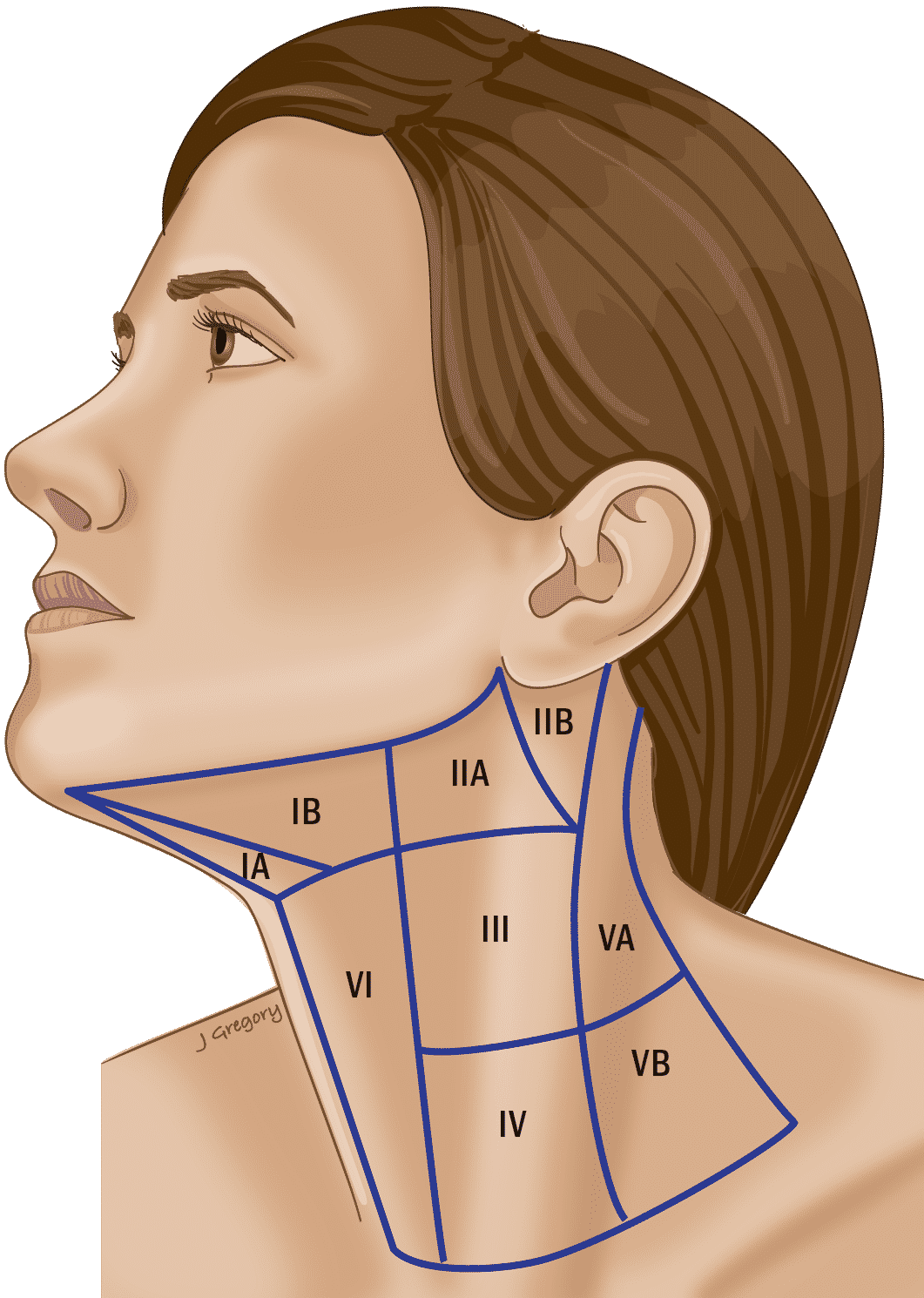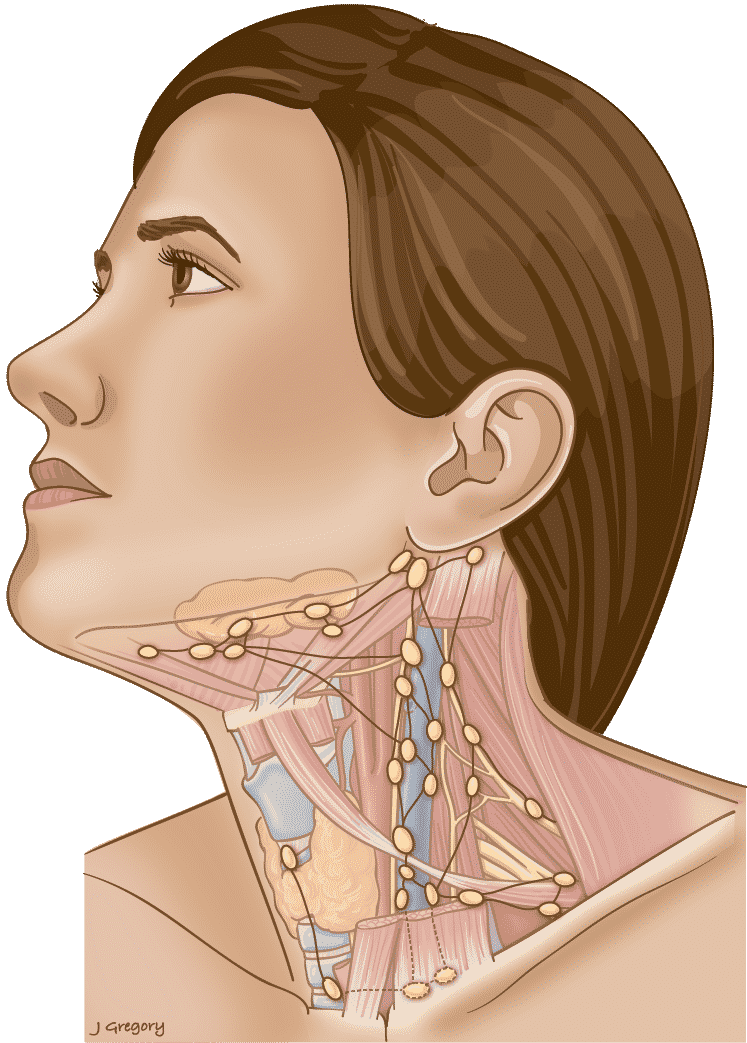In order to begin to fully understand the role of metastatic lymph nodes, it helps to understand the anatomy and function of lymph nodes themselves. Lymph nodes are small oval structures located all over the body that are part of the immune system and help the body fight off infections and cancers. They filter out substances (such as toxins, bacteria, and viruses) traveling in the lymphatic fluid within lymphatic channels. There are many lymph nodes in the neck, which can be broken down into different regions based on their location. These regions, or levels, are numbered with Roman numerals.


Different lymph node levels in the neck (the same levels exist on each side of the neck and are simply described as right versus left).
The lymph nodes in the neck represent the main site of metastasis of head and neck cancers. Cancers from a particular site in the head and neck (oral cavity, oropharynx, larynx, etc.) can drain into lymph nodes and lead to growth of cancer within the lymph node (called a metastatic lymph node). Metastasis is when cancer cells spread from one location in the body to another, creating new tumors in addition to the primary tumor.
Metastatic Patterns
Cancers can also spread through the blood, ending up in other organs such as the lung, liver or bone. In general, when primary head and neck cancers metastasize to lymph nodes in the neck, they tend to follow a pattern, with certain head and neck cancers spreading to certain groups of lymph nodes. This pattern is explained below:
Site of Primary Tumor Common Site of Lymph Node Metastasis Front half of the scalp and the skin of the upper part of the face Preauricular nodes (in front of the ear) and parotid nodes Back half of the scalp and the back part of the ear Post-auricular nodes (behind the ear) and suboccipital nodes (at the nape of the neck) Thyroid, nasopharynx, and esophagus Retropharyngeal nodes (behind the throat, sitting in front of the spine) Oral cavity Levels I, II, and III Oropharynx, hypopharynx, larynx Levels II, III, and IV Scalp and facial skin Level V Thyroid, larynx, hypopharynx, and esophagus Level VI













